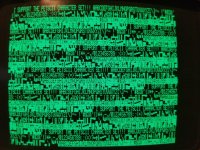RobertB
Veteran Member
Though the Commodore LCD was never produced, there are a few prototypes still surviving with CBM engineers Jeff Porter and Bil Herd. To my surprise, Steve Gray and Mike Naberezny, et al, are trying to build a Commodore LCD out of currently available parts! And the Commodore 128 is part of this LCD resurrection! To read more about the Commodore CLCD Project, go to
Writing from Portland, Oregon,
Robert Bernardo
Fresno Commodore User Group - http://www.dickestel.com/fcug.htm
Southern California Commodore & Amiga Network - http://www.portcommodore.com/sccan
Writing from Portland, Oregon,
Robert Bernardo
Fresno Commodore User Group - http://www.dickestel.com/fcug.htm
Southern California Commodore & Amiga Network - http://www.portcommodore.com/sccan

